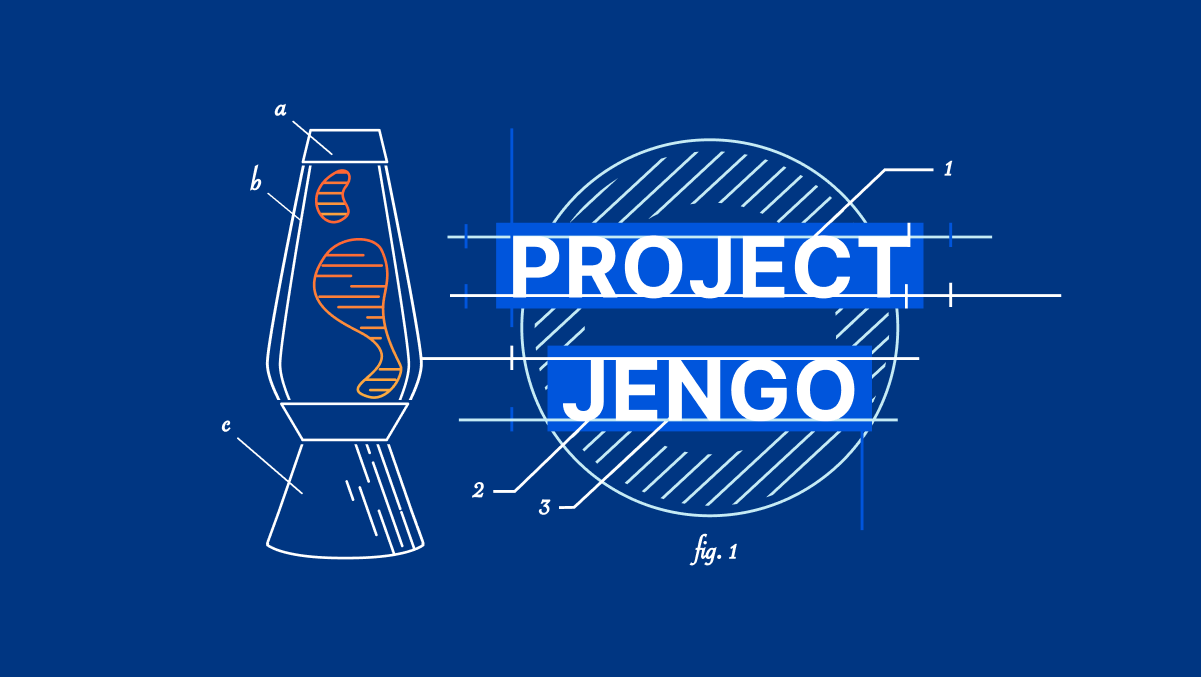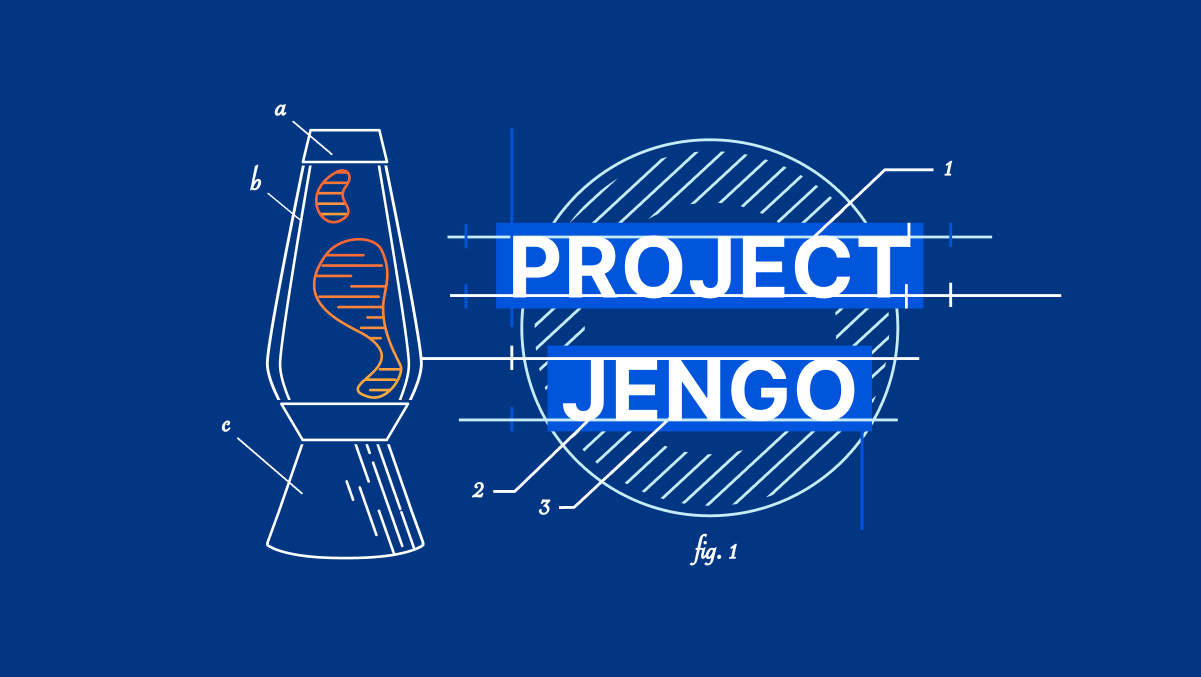2021 IT Blog Awards finalist!
I was surprised but very honoured to learn that my blog was selected as a finalist in the IT Blog Awards. I started this blog to help with my learning during a personal research project and to contribute to the open-source networking community as best I could. I never imagined that someone else might consider it for an honour such as this!
If you have gotten value from reading this blog, please go to the IT Blog Awards voting page and vote for the “Open Source Routing and Network Simulation” blog. Thank you so much!
Former R&D Engineer Wins Round 2 of Project Jengo, and Cloudflare Wins at the Patent Office


The classic children’s fairy tale The Three Billy Goats Gruff tells the story of three goats trying to cross a bridge to a field of yummy grass, despite the monstrous troll that lives underneath the bridge and threatens to eat them. To beat the troll, the goats played on his greed and proceeded across the bridge in order from smallest to largest – and holding the troll at bay each time with promises of a larger meal if he waited for the larger goat to follow. In the end, the troll passed on attacking the smaller goats and was left to do battle with the largest goat who was able to defeat the troll, toss him off the bridge, and watch him float downstream. The goats were then able to enjoy the yummy grass, troll-free. In our fight against Sable Networks (patent troll), we plan on being that third goat, and our recent wins suggest we might be on track to do just that.
$10,000 to our second round of Project Jengo winner!
We started Project Jengo 2 last year as a prior art search contest, so we could enlist your help in the battle against Sable Networks. We committed Continue reading
Just Out: netsim-tools Release 1.1
New Year break was probably my busiest time (programming-wise) in years. Jeroen van Bemmel continued generating great ideas (and writing code and device configuration templates), and I found myself saying, “why not, let’s do the right thing!” more often than I expected. In parallel, Stefano Sasso fixed configuration templates for Junos, Mikrotik Router OS, and VyOS, and we were good to go.
To give you an idea of how fast we were moving: issue #84 was created on December 22nd, Sunday’s pull request that pushed release 1.1 into the master branch was #135 (GitHub numbers everything you do sequentially).
Just Out: netsim-tools Release 1.1
New Year break was probably my busiest time (programming-wise) in years. Jeroen van Bemmel continued generating great ideas (and writing code and device configuration templates), and I found myself saying, “why not, let’s do the right thing!” more often than I expected. In parallel, Stefano Sasso fixed configuration templates for Junos, Mikrotik Router OS, and VyOS, and we were good to go.
To give you an idea of how fast we were moving: issue #84 was created on December 22nd, Sunday’s pull request that pushed release 1.1 into the master branch was #135 (GitHub numbers everything you do sequentially).
2021 IT Blog Awards finalist!

I have the honor of having my blog selected as a finalist in the 2021 IT Blog Awards, hosted by Cisco. It is a privilege and a great joy for me to have my blog selected for the fourth consecutive year! Congratulations also to all of the other finalists, who all produce great and valuable content! Click here to vote and choose the winner of the 2021 IT Blog Awards. If you want to vote for my blog, you can find it under: “Let’s talk about Network“, thank you in advance…
The post 2021 IT Blog Awards finalist! appeared first on AboutNetworks.net.
Keeping up with the Pepelnjakᣵ — OSPF over unnumbered interfaces for SROS
🎥Keeping up with the Pepelnjakᣵ — OSPF over unnumbered interfaces for SROS

Another week, another Netsim-Tools release 😩 One would think that a “reduced scope of activities” and Irena leaving would slow things down, but…The “s” (exponential) in the title reflects my suspicion that Ivan has somehow managed to clone himself, or perhaps we are seeing the outputs of an as-yet unnamed team of collaborators publishing in his name. Either way, things are crazy hot and changing on a daily basis, the “bleeding edge” of network automation indeed.
OSPF over unnumbered interfaces
This morning Ivan published a blog post about OSPF over unnumbered interfaces. The topology for that article can be found here; observant readers will quickly notice a problem with it, but we can easily fix that:
netlab up -d sros -p clab
That is, bring up the same topology, but use Nokia SR-OS devices and Containerlab instead of the defaults.

As Ivan explains in his article, OSPF doesn’t work over unnumbered multi-access links, and so Netsim-Tools complains and stops you from wasting more time.
After the nodes boot (and adding support for OVS bridges), we Continue reading
Tech Bytes: Embracing Policy-Driven Networks To Support Hybrid Work (Sponsored)
Today on the Tech Byte podcast we discuss redefining networks and policy in today’s hybrid world–that is, a network that needs to be available anywhere, anytime, anyhow, and any way. Aruba is our sponsor and we’re joined by James Robertson, CTO Advisor and Technology Strategist in the Office of the CTO.
The post Tech Bytes: Embracing Policy-Driven Networks To Support Hybrid Work (Sponsored) appeared first on Packet Pushers.
Tech Bytes: Embracing Policy-Driven Networks To Support Hybrid Work (Sponsored)
Today on the Tech Byte podcast we discuss redefining networks and policy in today’s hybrid world–that is, a network that needs to be available anywhere, anytime, anyhow, and any way. Aruba is our sponsor and we’re joined by James Robertson, CTO Advisor and Technology Strategist in the Office of the CTO.Marvell’s OCTEON 10 Challenges All Comers For DPU Supremacy
This article was originally posted on the Packet Pushers Ignition site on July 9, 2021. The ascendance of Software Defined Networking (SDN) has catalyzed a renaissance in specialized hardware designed to accelerate and offload workloads from general-purpose CPUs. Decoupling network transport and services via software-defined abstraction layers lets a new generation of programmable networking hardware […]
The post Marvell’s OCTEON 10 Challenges All Comers For DPU Supremacy appeared first on Packet Pushers.
Will 2021 SASE Advances Persist in 2022?
Organizations likely to adopt SASE faster than others are those that are embracing a cloud-first or cloud-native philosophy.Network Break 364: Oracle Acquires Federos For Network Assurance; Google Snags Security Startup Siemplify
Take a Network Break! This week we examine Oracle's purchase of network assurance vendor Federos, discuss why Cisco has added a service mesh manager to its Intersight Kubernetes service, explore why some users are frustrated with a crypto-miner in NortonLifelock's anti-virus software, and cover more tech news.
The post Network Break 364: Oracle Acquires Federos For Network Assurance; Google Snags Security Startup Siemplify appeared first on Packet Pushers.
Network Break 364: Oracle Acquires Federos For Network Assurance; Google Snags Security Startup Siemplify
Take a Network Break! This week we examine Oracle's purchase of network assurance vendor Federos, discuss why Cisco has added a service mesh manager to its Intersight Kubernetes service, explore why some users are frustrated with a crypto-miner in NortonLifelock's anti-virus software, and cover more tech news.DDoS Attack Trends for Q4 2021

This post is also available in 日本語, Deutsch, Français, Español.

The first half of 2021 witnessed massive ransomware and ransom DDoS attack campaigns that interrupted aspects of critical infrastructure around the world (including one of the largest petroleum pipeline system operators in the US) and a vulnerability in IT management software that targeted schools, public sector, travel organizations, and credit unions, to name a few.
The second half of the year recorded a growing swarm of one of the most powerful botnets deployed (Meris) and record-breaking HTTP DDoS attacks and network-layer attacks observed over the Cloudflare network. This besides the Log4j2 vulnerability (CVE-2021-44228) discovered in December that allows an attacker to execute code on a remote server — arguably one of the most severe vulnerabilities on the Internet since both Heartbleed and Shellshock.
Prominent attacks such as the ones listed above are but a few examples that demonstrate a trend of intensifying cyber-insecurity that affected everyone, from tech firms and government organizations to wineries and meat processing plants.
Here are some DDoS attack trends and highlights from 2021 and Q4 ‘21 specifically:
Ransom DDoS attacks
- In Q4, ransom DDoS attacks increased by 29% YoY and Continue reading
Cisco SDA case study #1 – the case of the traffic that won’t get denied
In this post, we will look at a peculiar case of a SGACL not denying traffic between two hosts in a SD-Access fabric.
